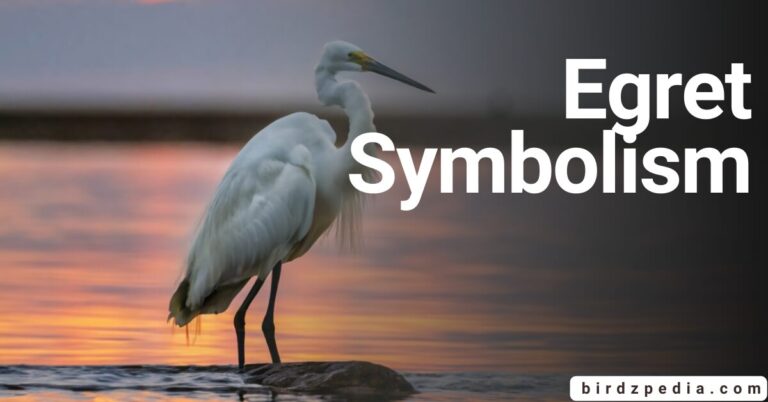Unique Discoveries of the Flightless Cormorant [Nannopterum Harrisi]
Scientific Classification
| Kingdom | Phylum | Subphylum | Class | Subclass | Infraclass | Order | Superorder | Family | Genus | Species |
|---|---|---|---|---|---|---|---|---|---|---|
| Animalia | Chordata | Vertebrata | Aves | Neornithes | Neognathae | Suliformes | Neoaves | Phalacrocoracidae | Nannopterum | Nannopterum harrisi |
Flightless cormorant
The Galapagos cormorant, or flightless cormorant (Nannopterum harrisi), is a rare species of bird found only in the Galapagos Islands. It is one of the many varieties of birds that make this area so amazing. What makes this cormorant unique is that it is the only cormorant known to have this remarkable
limitation to flying. After being placed under the genus Nannopterum, they was reclassified like most other cormorants under the genus Phalacrocorax. Reclassifying the flightless cormorant and two other American cormorant species into
the Nannopterum genus was recommended by a notable 2014 study. The International Ornithological Congress (IOC) accepted this reclassification in 2021 after it was deemed acceptable.

Summary
- Species: Nannopterum harrisi
- Common Name: Galapagos Cormorant or Flightless Cormorant
- Endemism: unique to the Islands of the Galapagos
- Distribution and Habitat:
- only found on the Galapagos Islands.
- prefers coastal regions with rocky shorelines for foraging and nesting.
- Flight Incapacity: Remarkable among cormorants, being the only species that isn’t able to fly
- Genus History:
- Initially classified under a different genus, Nannopterum
- Subsequently recategorized within the Phalacrocorax genus
- Reclassification:
- The Nannopterum harrisi and two other American cormorant species were reclassified into the Nannopterum genus based on a 2014 study.
- IOC Adoption:
- The International Ornithological Congress (IOC) accepted this reclassification in 2021
- Ecology:
- adjusts to the environment of the sea
- mostly piscivorous, consuming fish as food
- Conservation:
- Due of its small population and restricted range, it is vulnerable.
- The goal of conservation initiatives is to protect the distinctive Galapagos ecosystem.
- In Popular Culture:
- Possibly highlighted in books or videos that showcase the distinctive biodiversity of the Galapagos Islands
Description
| Feature | Description |
|---|---|
| Size | Largest extant member of its family, 89–100 cm (35–39.5 in) in length, weighing 2.5–5.0 kg (5.5–11.0 lb) |
| Wings | Wings are about one-third the size required for flight, hindering flight capabilities |
| Keel on Breastbone | Keel, where flight muscles attach, is significantly reduced |
| Feet and Legs | Webbed feet and sturdy legs for propelling through water |
| Prey | Feeds on fish, small octopuses, and other marine creatures; forages near the sea floor, no more than 200 meters offshore |
| Appearance | Upperparts are blackish, underparts are brown; beak is hooked, and eyes are turquoise; similar to a duck with short, stubby wings |
| Sexual Dimorphism | Males are larger and approximately 35% heavier than females |
| Juveniles | Glossy black with a dark eye, resembling adults; differentiate by color |
| Vocalizations | Adults produce low growling vocalizations |
| Feathers | Not waterproof; spend time drying wings after each dive; body feathers are thicker, softer, denser, and more hair-like |
| Preen Gland | Produces very little oil; air trapped in dense plumage prevents waterlogging |

Distribution and Habitat
This unique species of cormorant is found only in the Ecuadorian Galapagos Islands, exhibiting a very restricted geographic distribution. The two main islands that make up its habitat are Fernandina and the northern and western shores of Isabela. The yearly upwelling of the eastward-flowing Equatorial
Undercurrent, or Cromwell Current, is closely associated with the range of the Nannopterum harrisi. This oceanic phenomenon affects the presence of cormorants in the western islands of the Galapagos archipelago by supplying them with cold, nutrient-rich water. There have been significant variations in
the population of this species, most notably in 1983 when an El Niño-Southern Oscillation (ENSO) event resulted in a 50% decline in numbers, leaving only 400 individuals. Despite this setback, the population swiftly recovered, reaching an estimated count of 900 individuals by the year 1999.
In its natural habitat, this species is primarily found on the stony beaches of volcanic islands. The majority of foraging occurs in the shallow coastal waters found in bays and straits. Interestingly, the non-flying cormorants have a rather sedentary lifestyle, preferring to live most of their lives and engage in breeding
activities near certain particular coastlines that are usually several hundred meters long. Because of the genetic imprint left by this sedentary behavior, there is observable differentiation across the main colonies, most notably between the islands of Fernandina and Isabela.

Ecology
- Nesting Period: The months of April through October coincide with the lowest sea surface temperatures, which guarantees a plentiful supply of marine food and lessens heat stress in the chicks.
- Breeding Colonies: Form during this time of nesting, with up to 12 pairs at most.
- Courtship Behavior: starts in the water, where the male and female swim around each other in a display that resembles a snake bending its neck. On land, the courting carries on.
- Nest Construction: The female gathers seaweed and other debris, including pieces of rope, mostly from the males and weaves them into a large nest somewhat above the high water mark.
- Egg Laying: Every clutch, females lay three pale eggs; however, typically, only one chick makes it out alive.
- Incubation: Both male and female equally share incubation responsibilities.
- Parental Duties: Following hatching, the female provides 40–50% more food items than the male, and both parents share responsibility for raising and feeding the young.
- Chick Independence: Around 70 days old, females may forsake their chicks, leaving males to take up the role of parents. The female can find a new companion and reproduce.
- Reproductive Potential: It is possible for females to rear many broods in a single season, contingent on food availability and environmental conditions, but not for males.
- Survival and Longevity: Both sexes have an annual survival rate of almost 90% and a lifespan of roughly 13 years.
- Population Stability: Breeding will bring enough new members into the population to keep it steady over time.

Conservation
| Feature | Description |
|---|---|
| Evolutionary Background | Cormorants evolved on an island habitat without predators, leading to flightlessness due to a lack of natural threats. |
| Predator Introduction and Human Interaction | Introduced predators like cats, dogs, and pigs, and lack of fear of humans pose threats to the Nannopterum harrisi. |
| Past Threats and Eradication Efforts | Feral dogs were a significant threat on Isabela but have been eradicated. Future risks include rats or cats on Fernandina. |
| Threats from Fishing | Fishing with nets poses a threat, reducing food availability and causing bird entanglement and mortality. |
| Breeding Strategy Impact | Breeding success affected by a rise in sea surface temperature during the breeding season, particularly during ENSO events. |
| Vulnerability to Oil Spills | Large oil spills are identified as a potential threat to the flightless cormorant. |
| Population Status and Rarity | One of the world’s rarest birds; estimated population fluctuates, ranging from about 900 to 1679 individuals. |
| IUCN Conservation Status | Formerly Endangered, downlisted to Vulnerable in 2011, indicating a stabilized population. |
| Geographic Range and Protection | All populations within Galapagos National Park and Marine Reserve; the entire archipelago designated as a World Heritage Site. |
| Monitoring and Conservation Efforts | Regular monitoring by the Charles Darwin Research Station; conservation proposals include annual monitoring, visitor restrictions, and prevention of fishing in foraging areas. |
In popular culture
The discovery and subsequent search for them in the Galapagos Islands during the Napoleonic wars in 1805 by Royal Navy surgeon and naturalist Stephen Maturin (Paul Bettany) is the subject of a subplot in the 2003 film Master and Commander:
The Far Side of the World. At the end of the movie, Russell Crowe’s character, Jack Aubrey, the ship’s captain, tells Maturin that “it’s not going anywhere,” despite his eagerness to travel back to the Galapagos to catch the bird.
In contrast to the fictitious chronology depicted in the movie, naturalist Charles Miller Harris, the man who gave the species its name, did not formally find Nannopterum harrisi until 1897, during an expedition funded by Walter Rothschild.

Threats
- On the Galapagos Islands, introduced predators like cats, dogs, and pigs are a threat to flightless cormorants.
- Fishing with nets directly endangers the cormorant species by reducing its food supply.
- There’s a serious risk to the flightless cormorant if rats or cats are introduced to some islands.
- mating success is impacted by sea surface temperature rise during mating seasons, particularly during El Niño episodes.
- Significant oil spills are thought to pose a risk to the habitat and survival of flightless cormorants.
- Despite not being able to fly, the bird’s behavior and stress levels can be affected by human contact and interactions, including handling by tourists.
Common Names in Different Languages
| Language | Common Name |
|---|---|
| English | Flightless Cormorant |
| Spanish | Cormorán no Volador |
| French | Cormoran des Galápagos |
| German | Flugunfähiger Kormoran |
| Italian | Cormorano non Volante |
| Portuguese | Cormorão-das-galápagos (Brazil) |
| Russian | Бескрылый баклан (Beskrylyy baklan) |
| Chinese (Simplified) | 无翼鸬鹚 (Wúyì lúcí) |
| Japanese | 飛べないカワウ (Tobenai Kawau) |
| Arabic | كورموران لا يطير (Kurmuuraan la yateer) |

FAQs
Q: What is the scientific name of the Flightless Cormorant?
- Nannopterum harrisi is the scientific name .
Q: Where is the Nannopterum harrisi found?
- The Galapagos Islands are home to the endemic Nannopterum harrisi, which is found primarily on islands like Fernandina and the northern and western shores of Isabela.
Q: Why can’t they fly?
- Because there are so many food sources along the shorelines and no natural predators on its island home, theyt may have evolved to become flightless.
Q: How does the Nannopterum harrisi forage for food?
- Foraging in shallow coastal waters, such as bays and straits, they dives for fish, small octopuses, and other marine life.
Q: What threats does they face?
- Threats to the Nannopterum harrisi include rats or cats possibly finding their way into its habitat and introduced predators including dogs, cats, and pigs. The species is also threatened by net fishing.
Q: What is the breeding strategy of their?
- When sea surface temperatures are at their lowest, from April to October, they often builds its nests, which results in an abundance of marine food. The male and female of the species share incubation and parenting responsibilities when they build breeding colonies.
Q: How many individuals are there in the Nannopterum harrisi population?
- The number of Nannopterum harrisi has been estimated to be between 900 and 1679 individuals, depending on which study was conducted.
Q: What is the conservation status of the Nannopterum harrisi?
- After its population stabilized, they was downlisted from Endangered to Vulnerable in 2011. Monitoring, visitation limitations, and prohibiting net fishing in foraging areas are all part of conservation efforts.
Q: When was they formally discovered?
- Naturalist Charles Miller Harris made the formal discovery of the Nannopterum harrisi in 1897 while on a Walter Rothschild-sponsored trip.
Q: What is the typical lifespan of the Nannopterum harrisi?
- They has an annual survival rate of roughly 90% and an average longevity of roughly 13 years.


![Southern Ground Hornbill [Bucorvus leadbeateri]: Complete Guide](https://birdzpedia.com/wp-content/uploads/2024/01/Bucorvus-leadbeateri-768x402.jpg)


![Red-Breasted Toucan: [Ramphastos dicolorus] A Symphony of Colors](https://birdzpedia.com/wp-content/uploads/2024/01/Red-breasted-Toucan-768x402.png)
![Black Skimmer [Rynchops niger], Diet, Predators, and Characteristics](https://birdzpedia.com/wp-content/uploads/2023/12/Black-Skimmer-768x402.png)
